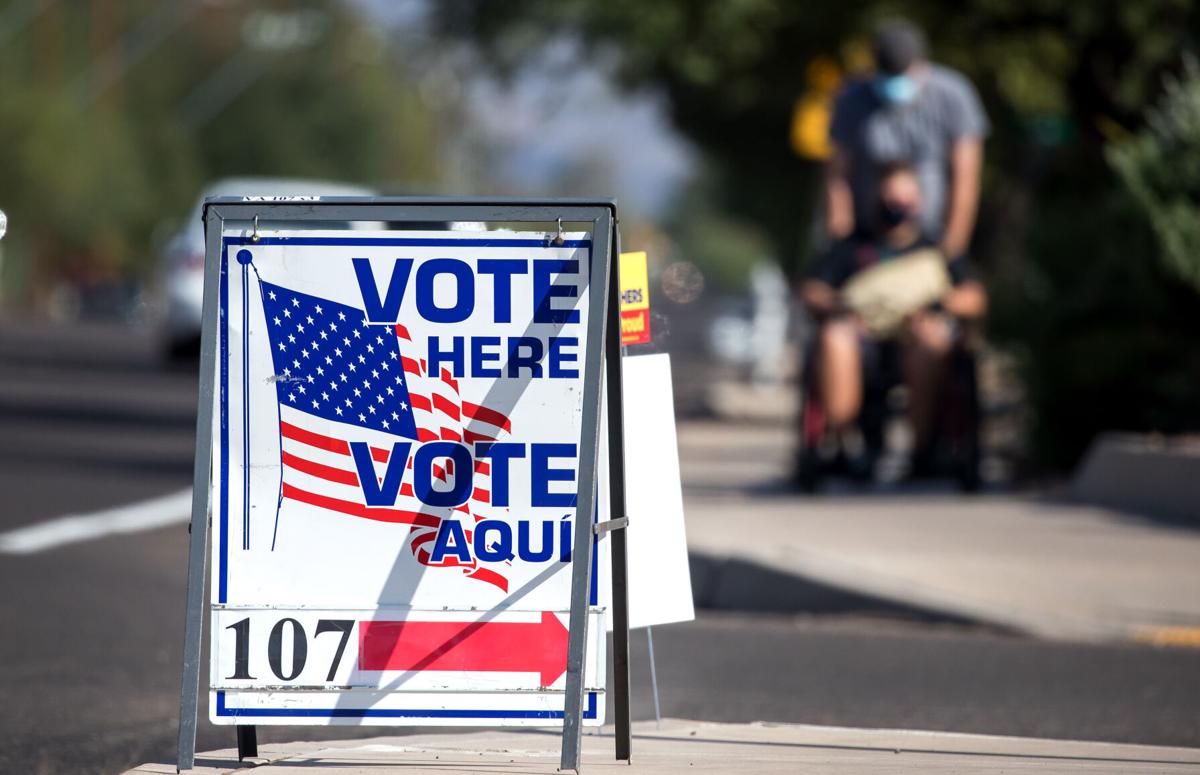PHOENIX — Arizonans may get to vote on scrapping the system by which nominees for public office are chosen, a change that could reshape the state’s Legislature and congressional delegation.
Paperwork filed Monday with the Secretary of State’s Office would ask voters to create an open primary for all elections, including those for Congress members, statewide elected officials, legislators, county supervisors and Tucson council members.
That would mean all candidates from all parties — and those with no partisan affiliation — would vie in the primary. And every registered voter would get a chance to vote in that wide-open primary.
As it is now, primaries are essentially partisan affairs, limited to those registered with that party. Independents, the largest bloc of Arizona voters, can participate in a partisan primary. But there are hurdles, including a requirement that they choose ahead of time which party’s ballot they want.
A group called Make Elections Fair Committee filed the paperwork in order to begin circulating petitions to put the measure on the 2024 ballot. Those backers need at least 383,923 valid signatures on petitions by July 3 to do so.
Sarah Smallhouse, who chairs the committee sponsoring the ballot proposal, said the current system — with taxpayers paying for the cost of running partisan primaries — is unfair because it “discriminates’’ against the plurality of independent voters.
The real net effect of the measure would be to create a system where nominees would be chosen regardless of their political affiliations.
Political consultant Chuck Coughlin, who is part of the movement to change the system, said this change would be crucial given that probably 25 of the state’s legislative districts are dominated by one party or the other. That has meant whoever wins the partisan primary is a shoo-in when the November general election comes around.
Ditto, he said, of the majority of the state’s nine congressional districts.
Under the proposed system, up to the top five vote-getters in the open primary would advance to the general election. The presumption is that, with all registered voters choosing the nominees, those that survive would not be on the extreme fringes of either party.
What happens after the proposed open primary, however, is not actually part of the initiative but would be left to the governor and lawmakers.
They could decide to allow only the top two vote-getters in the primary to fight it out in the general election.
The initiative would preclude that decision being made on a partisan basis, however. So while the top two vote-getters could be a Democrat and a Republican, they could just as easily be two Democrats, two Republicans, two Libertarians, two unaffiliated voters — or any combination thereof.
But the measure would also permit the governor and lawmakers to allow up to the top five vote-getters to advance to the general election. At that point, it would set up a system of ranked-choice voting, where those casting a ballot would rate their candidates based on their first, second, third and fourth preference.
That means if no person got at least 50%, then the candidate who got the fewest votes would be eliminated. Then, the votes of anyone for whom that person was the first choice would be reallocated to that voter’s second choice.
And it would go around and around until someone has 50%.
Coughlin, however, said the focus is really on the radical change in the primary of giving all registered voters a chance to weigh in on who they want elected — and not have whoever wins a partisan primary in a heavily partisan district simply installed without any opposition.
Now, in a district dominated by Republicans, candidates need to appeal only to GOP registrants — and specifically those who tend to turn out in partisan primaries. Then, with the registration edge, the winners of those primaries become all but unbeatable in the general election. The same is true in Democrat-dominated districts.
That happens now to the point that the minority party in some districts doesn’t even bother to field a candidate, as occurred when Republicans Debbie Lesko and Paul Gosar each won a new two-year term in the U.S. House of Representatives without Democratic foes.
The effort could prove to be an uphill fight — and not only because there is likely to be opposition from Republicans who have benefited from the current system and maintained unbroken control of the Arizona House for six decades and for the state Senate for most of that time.
First, just to get the measure on the ballot, Coughlin said that, given the normal margin of error and bad signatures, the backers will need to find 500,000 registered voters willing to give the idea a chance.
Just gathering the signatures, he figured, will cost “upwards of $6.5 million.’’ That figure doesn’t account for actually running a campaign.
Coughlin said he has actual cash in hand and commitments of $4.5 million. He would not disclose who will finance it, saying that will become public when the required campaign finance reports are filed.
He previously told Capitol Media Services that a large chunk of the funds are coming from two board members: Smallhouse and Don Budinger.
Smallhouse, a Tucson native, is president of the Thomas R. Brown Foundations, named after her father who was a founder of the now-defunct Burr-Brown Corp. It is involved in providing grants for research, education, workforce development and civic leadership.
Budinger is chairman and founding director of the Rodel Foundation, which also has been involved in awarding grants.
Get your morning recap of today's local news and read the full stories here: tucne.ws/morning





